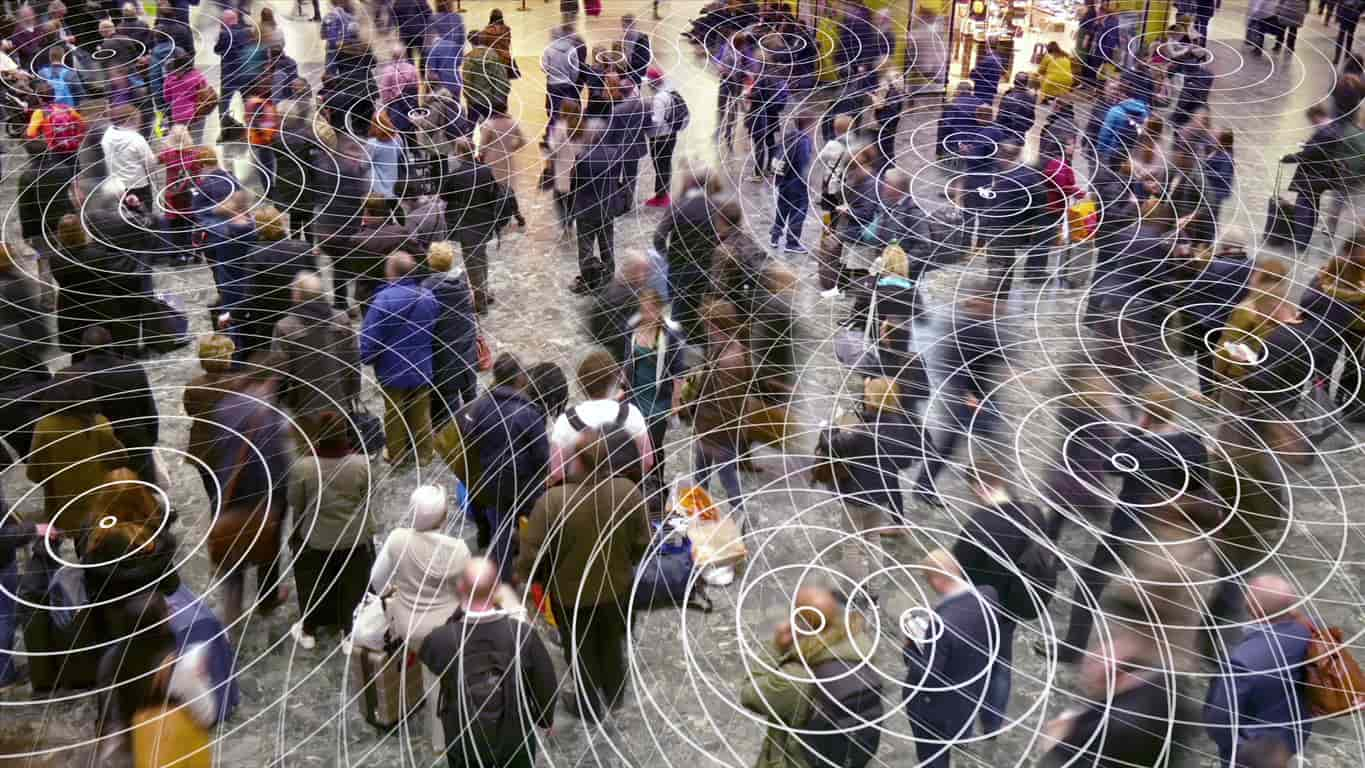
Blog
High-density coverage areas like arenas, airports, or massive lecture halls have a few unique design considerations. Here are five tips for better Wi-Fi.
Key takeaways:
- 5 high-density area design tips:
-
- Identify user requirements
- Plan network bandwidth
- Deploy APs properly
- Evaluate noise
- Monitor the WLAN
High-density areas bring some of the biggest challenges to wireless network designers and managers. Lots of smartphones and users are concentrated in one space, and endpoints fight for bandwidth and a reliable connection. Some users have multiple devices trying to get service, further congesting the area. And many other variables can impact the user experience, including the types of applications people are using, the frequency with which they enter and exit an area, and certain times of day that are busier than others.
With so many people trying to use Wi-Fi in one place, special considerations are necessary for these areas, and solutions begin with the right network design. Here are five basics for designing high-density network areas to optimize wireless coverage and performance.
1. Identify the user requirements
Any wireless network exists to support the tasks people are trying to accomplish in the area. Thus, without knowing what kinds of activities will be taking place and which applications will be used, it is challenging to design and implement the right solution.
For example, an arena or concert venue calls for accurately assessing both the potential quantity of users and devices and which applications they will use. In these areas, ticket scanning, food and beverage ordering, social media usage, web browsing, and video streaming are common activities. Outline the average client, determine what they usually use their devices for, number them and their devices, and calculate the metrics needed to satisfy this use case.
2. Plan network bandwidth
Different applications have different Wi-Fi requirements. For example, email or messenger apps on a mobile phone can tolerate far more latency and don’t require much bandwidth (0.1 Mbps). VoIP activities may not need a ton more bandwidth, but they have a very low tolerance for latency. On the other hand, video conferencing apps and video streaming have low latency tolerance and take up far more bandwidth—1.5 Mbps for HD video calls and 5 Mbps for some Netflix videos, according to Ubiquiti.
So, identifying the key applications that the average user will employ helps plan the network capacity and bandwidth needed to sustain these activities. Another essential point to remember is that one client is not necessarily performing just one activity at a time—Wi-Fi needs to support multitasking on each device, thus requiring more resources.
Once you understand the amount of bandwidth needed per client, multiply that number by the total number of people the space can hold and the average number of devices.
3. Deploy APs properly
Designers also need to be strategic about the kinds of access points (APs) deployed in high-density areas, the number of APs, and their placement.
Dual-band APs are a must, which allow devices to connect to both 2.4 GHz and 5 GHz bands since they have both radios installed (as opposed to a multi-band AP, which can operate in both bands but not at the same time). Dual-band APs help support high-density area networking because they provide more throughput for clients. However, sometimes it may be in your best interest to turn off the 2.4 band altogether.
Another AP tip is to implement an AP-overlap design, where more than one AP is available to a user at a given time if one of these APs gets overloaded. 7SIGNAL standards state that there should be less than 30 clients per AP; otherwise, users may experience some slowdowns.
4. Evaluate noise
Avoiding interference should be a primary goal when designing a high-density WLAN. One way to uncover what you’re dealing with is with the signal-to-noise ratio (SNR). This is the difference between the desired data signal and noise, or in-band interference. The WLAN signal must be louder than other signals.
Tactics to keep SNR steady include maintaining low power levels and planning out channel assignments, in addition to the correct AP placement. The benchmark for SNR should be to keep it greater than 25 decibels so that a signal is always louder than the background noise, thus reducing interference experienced by end-users.
SNR should be evaluated during the site survey, a crucial component of designing a high-density area. Designers must also consider RF propagation in the environment (how radio waves behave as they travel from one point to another) and locate potential RF interference sources with a spectrum analysis that measures Wi-Fi signal and strength.
5. Monitor the WLAN
When you’ve deployed service in a high-density area, it’s time to keep a close eye on what’s happening moment-to-moment.
The Sapphire Eye® from 7SIGNAL can be placed in busy, high-traffic areas to deliver the insight needed to ensure performance and keep improving it. Place these sensors anywhere that Wi-Fi is mission-critical. One Sapphire Eye can monitor up to six access points. Mobile Eye® can also be installed onto handheld ticket scanners, tablets and POS systems, keeping operations running smoothly.
Part of designing a network for high-density areas is maintaining them—and monitoring solutions like the Sapphire Eye and Mobile Eye give you 24/7 data to improve the digital experience of end-users. 7SIGNAL’s wireless network monitoring solutions help organizations with highly concentrated areas keep Wi-Fi performance where it needs to be.
7SIGNAL® is the leader in wireless experience monitoring, providing insight into wireless networks and control over Wi-Fi performance so businesses and organizations can thrive. Our cloud-based wireless network monitoring platform continually tests and measures Wi-Fi performance at the edges of the network, enabling fast solutions to digital experience issues and stronger connections for mission-critical users, devices, and applications. Learn more at www.7signal.com.